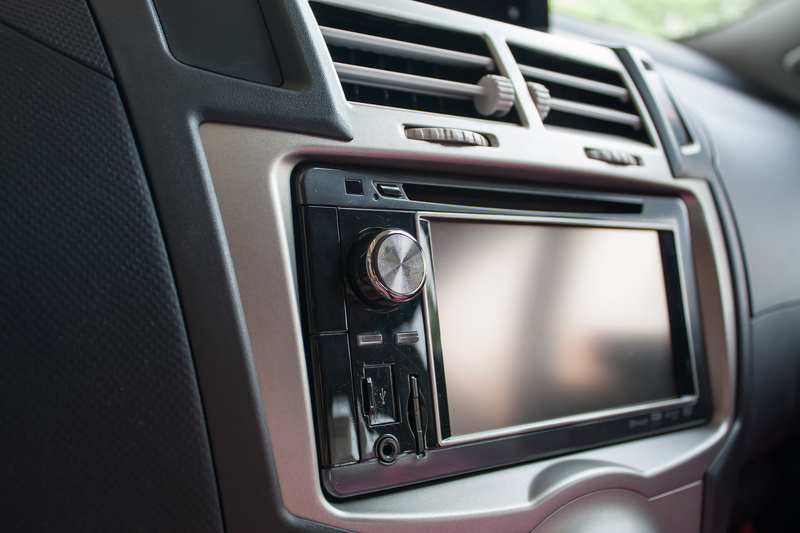How to Reduce Moving Stress with Organized Packing Techniques
Moving to a new home or office can be both an exciting and daunting experience. For many, the process is associated with anxiety, chaos, and overwhelming stress. Fortunately, with the right strategies, you can transform moving into a smooth, efficient, and even enjoyable task. The secret? Organized packing techniques! By investing time in planning and using proven packing methods, you can significantly reduce moving stress, keep your belongings safe, and ensure a seamless transition to your new space.
Why Organized Packing Matters
Many people underestimate the importance of a structured packing approach. Disorganized packing leads to misplaced items, last-minute rushes, and unnecessary headaches. Some of the top reasons to adopt organized packing techniques include:
- Efficiency: A systematic approach saves valuable time and allows you to tackle packing in manageable phases.
- Reduced Stress: Knowing exactly where your things are, minimizes anxiety.
- Safety: Well-packed boxes protect your valuables from damage during the move.
- Smoother Unpacking: Unpacking is easier and faster when items are well-organized and labeled.
- Clear Inventory: You will have a precise record of your possessions, making it easier to detect lost or damaged items.

Packing Preparation: The Foundation of a Stress-Free Move
1. Start Early
Procrastination is the enemy of a stress-free move. Begin the packing process at least four to six weeks before your moving date. This buffer prevents last-minute panics and allows adequate time for decluttering, organizing, and gathering supplies.
2. Create a Packing Timeline
A detailed packing timeline breaks the process into smaller, manageable steps. List which rooms or categories to tackle each week. For example:
- Week 1: Storage areas (attic, basement, garage)
- Week 2: Out-of-season clothing, books, and decor
- Week 3: Bedrooms and living areas
- Week 4: Kitchen and essentials
3. Gather Quality Packing Supplies
Using the right packing materials is crucial for protecting your belongings. Gather:
- Various sizes of sturdy boxes
- Bubble wrap and packing paper
- Permanent markers and labels
- Heavy-duty packing tape
- Scissors and box cutters
- Plastic bins for fragile or essential items
Tip: Start collecting boxes early. Many grocery stores and retailers are happy to give away unused boxes!
Declutter Before You Pack
Packing is the perfect opportunity to reassess your possessions. The less clutter you move, the cheaper and easier your relocation will be.
Categories for Sorting Items
- Keep: Items that are necessary and loved
- Donate/Sell: Gently used items you no longer need
- Recycle: Items that can be given new life
- Dispose: Things that are broken or unusable
Did you know? Decluttering can also provide tax benefits if you donate items to qualified organizations!
Organized Packing Techniques: Step-by-Step Guide
1. Pack Room by Room
The most effective way to stay organized is to tackle one room at a time. This method prevents mixing items from different rooms and simplifies both packing and unpacking.
2. Label All Boxes Clearly
Use a consistent labeling system that includes:
- Room destination (e.g., Kitchen, Master Bedroom)
- Contents summary (e.g., "Pots & Pans", "Winter Clothing")
- Fragile or heavy item indicators
- A numbering system for tracking (e.g., Box 1 of 10)
Consider color-coded labels or stickers to easily identify each room.
3. Use an Inventory List
An inventory list tracks every box and its contents. You can use a notebook, spreadsheet, or moving app. This technique:
- Prevents misplaced items
- Helps prioritize essential boxes
- Assists with insurance claims in case of loss or damage
4. Pack Strategically
- Heavier items in small boxes: Avoid overloading large boxes with heavy items like books or dishes. Small boxes are easier to carry and less likely to break.
- Lighter items in larger boxes: Bedding, linens, and plush toys work well in bigger boxes.
- Fill gaps: Use clothing, towels, or packing paper to prevent items from shifting during transit.
5. Create an "Essentials" Box
Set aside a box of essentials you'll need immediately at your new home:
- Toiletries
- First-aid kit and personal medications
- Change of clothes
- Chargers and basic electronics
- Important documents
- Cleaning supplies and paper towels
- Basic kitchen utensils and snacks
Tip: Carry this box with you rather than loading it on the moving truck.
6. Protect Fragile Items
- Wrap fragile items individually. Use bubble wrap, newspaper, or towels to cushion glassware, dishes, and electronics.
- Label as fragile. Clearly mark these boxes and keep them upright.
- Double-box for added protection. Place the wrapped item in a box, then cushion that box inside a slightly larger one.
7. Take Photos of Electronics and Furniture Setups
Before disassembling complex systems, snap photos for reference. This will significantly ease the process of setting up your entertainment center, computer, or furniture at your new place.
Tips for Moving Day
1. Confirm All Arrangements
Double-check your moving company booking, truck reservation, and confirm your helpers' schedules. Keep important documents and contacts handy.
2. Have a Moving Day Bag
- ID, moving contract, and keys
- Phone and charger
- Snacks and water
- Essential toiletries and medications
- A change of clothes
3. Take Your Time
Even the most organized move can feel fast-paced. Take regular breaks, eat, and stay hydrated. Trust your new-organized packing strategy, and focus on one task at a time: you'll get through it!
Bonus: Specialized Packing Techniques for Different Items
Clothing
- Wardrobe boxes: These tall boxes have built-in hanging rods for easy closet transfer.
- Vacuum-seal bags: Compress bulky items, like winter coats and bedding.
- Shoes: Stuff shoes with socks to retain their shape, and pack in original boxes or plastic bins.
Kitchenware
- Pack dishes vertically: Like records, to minimize breakage risk.
- Bundle utensils: Secure with rubber bands and wrap in cloth or paper.
- Pots and pans: Nest inside each other, with protection in between.
Books and Documents
- Use small, sturdy boxes--books add up quickly in weight.
- Consider donating books you no longer read to lighten your load.
- Keep essential records in your moving day bag for easy access.
Electronics
- Original boxes with foam inserts are best.
- Wrap screens and delicate components in anti-static bubble wrap.
- Label all cables and place them in a bag taped to the device.
Final Thoughts: Make Your Move a Success with Organized Packing
Moving doesn't have to be a source of dread. Embracing organized packing techniques can make all the difference between a frenetic move and a seamless, positive experience. By planning in advance, staying organized, and implementing these stress-reducing strategies, you'll safeguard your belongings and your peace of mind.
So, whether you're relocating a small apartment or a large family home, remember: organization is the key to reducing moving stress. Stay methodical, label everything, and don't hesitate to ask for help from friends, family, or professional movers. Happy moving!

Frequently Asked Questions About Reducing Moving Stress with Organized Packing
Is it better to pack myself or hire professionals?
Both options have pros and cons. Packing yourself gives you more control and can save money, but it's time consuming. Professional movers offer expertise and speed, though at a higher cost. Choose what's right for your timeline and budget--and use organized packing techniques either way!
How far in advance should I begin packing?
Start at least 4 to 6 weeks before your move to avoid unnecessary stress. Early preparation also allows ample time for decluttering and organizing.
What if I have too many things?
Prioritize decluttering as a first step. Donate or sell what you don't use. Fewer items mean less to pack, less to move, and less stress overall. If you're overwhelmed, consider professional organizers who specialize in downsizing and packing.
How do I unpack efficiently at my new home?
Unpacking is easier if you've used organized packing techniques when moving out. Start with essentials, then tackle one room at a time. Use your inventory list to find what you need, and recycle boxes as you go to keep your space clutter-free.
Take the Stress Out of Your Next Move
Moving marks the beginning of an exciting new chapter. By approaching your move with organized packing techniques and a well-thought-out plan, you're setting yourself up for success. Stay positive, follow these tips, and transform what might have been a stressful event into an organized, memorable adventure!



